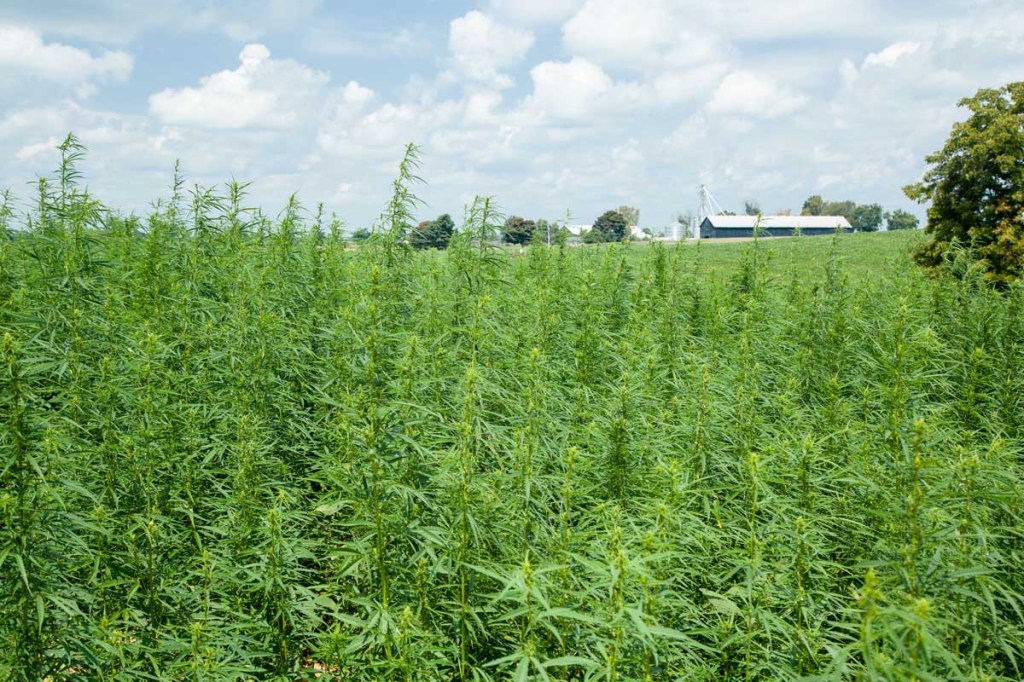Kentucky banks on hemp as next cash crop
Published 2:30 pm Monday, January 23, 2017

- Hemp research fields on the University of Kentucky's C. Oran Little Research Center farm in Woodford County, Kentucky.
Cannabis leaves will be lifting high across Kentucky fields this growing season as hemp, a legal relative to marijuana, continues to gain popularity among state growers and producers.
The Kentucky Department of Agriculture has approved 209 applications to grow approximately 12,800 acres of industrial hemp for research purposes this year, according to Doris Hamilton, Kentucky Department of Agriculture industrial hemp program manager.
This marks a giant leap from the 33 acres of industrial hemp grown in 2014, which steadily rose to 922 acres in 2015 and to more than 2,350 acres in 2016.
Farmers say the public may have misconceptions about hemp; some still view it as taboo and far too close to marijuana. But according to the state agriculture department’s website, hemp is “genetically different than marijuana and distinguished by its use and chemical makeup.”
Industrial hemp plants are low in THC, the widely known chemical compound found in marijuana, typically having less than 1 percent, according to KDA’s industrial hemp facts. Marijuana plants are usually found to have 10 percent or higher.
Additionally, many items are produced from the plant, including fabric, paper, carpet, auto parts, foods/beverages, body care products, cosmetics and pharmaceuticals.
In recent years, states like Alabama, California, Florida, Michigan, Missouri, New York, Pennsylvania and West Virginia have joined Kentucky in pro-hemp measures, with several developing pilot growing and research programs by 2015.
With commodity prices declining, state agriculture officials believe Kentucky farmers’ interest in industrial hemp and alternative crops is growing
Currently, farmers can only grow industrial hemp as part of the state’s pilot program, which began in 2014 after authorization by Section 7606 of the U.S. Farm Bill, which opened the crop back up to Kentucky.
Hemp can be grown for three harvestable components: fiber (stalk), grain or floral material, according to Hamilton.
“The program participants are researching all aspects of the plant and investigating crop production techniques as well as process and marketing,” she said.
Applications for the program are accepted annually. Applicants are evaluated, but Hamilton said the criterion is “fairly basic and (it is) simple for farmers to qualify.” Several universities are also conducting research for the program.
Approved participants are required to go through an orientation prior to signing a Memorandum of Understanding to conduct research for KDA.
Each crop location is registered with law enforcement and participants are required to submit report forms on planting and harvest notifications, along with a final production report, Hamilton explained.
Senate Majority Leader Mitch McConnell said, having heard from Kentuckians about the success of the pilot program, he will continue to work with his colleagues to help advance industrial hemp research production in the state.
“Research on industrial hemp shows that the commodity represents an opportunity to provide a shot in the arm for Kentucky’s agricultural sector,” McConnell said in a statement to The Richmond, Kentucky Register. “I am hopeful that growing hemp will help our farmers and create jobs. It’s an opportunity Kentucky must not miss, and based on the growth of research pilot programs in Kentucky, it seems our farmers agree.”
Kentucky Agriculture Commissioner Ryan Quarles said the department’s strategy is to use the pilot programs to encourage and expand the industrial hemp industry in the state.
Hemp production outside the pilot program will depend on federal legislation to legalize the plant as an agricultural crop. However, according to Hamilton, the Hemp Farming Act has been introduced to Congress, but has yet to come up for vote.
King writes for the Richmond, Kentucky Register.





